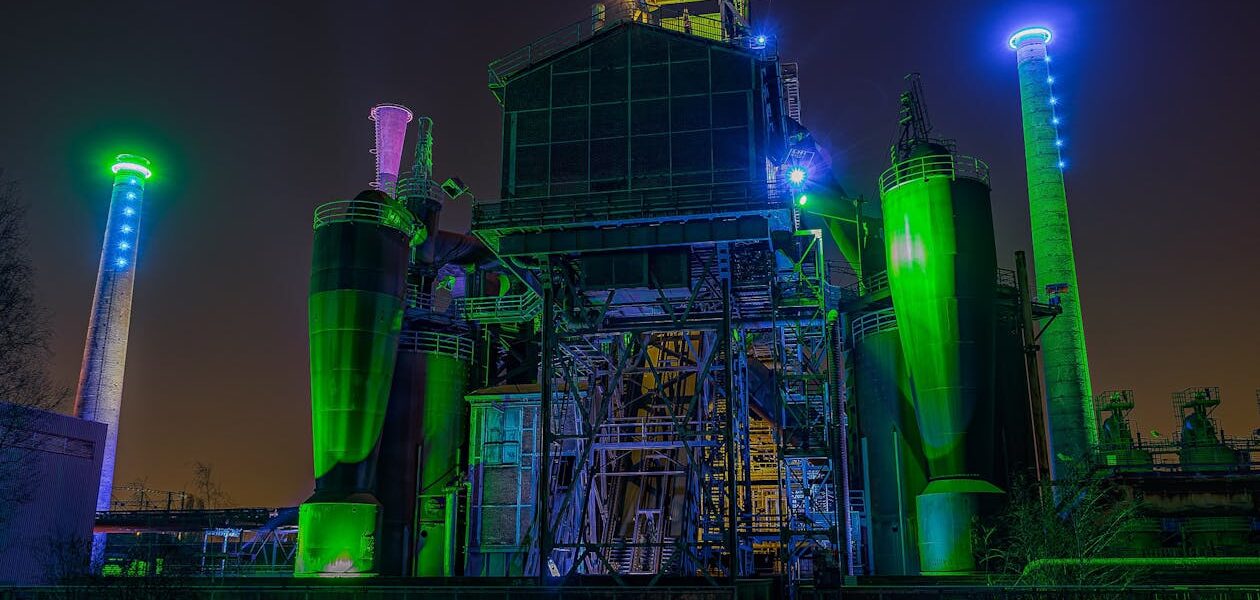In the construction industry, materials and techniques evolve continually, driven by the need for efficiency, sustainability, and cost-effectiveness. One of the materials gaining significant attention in modern construction is cold-formed steel (CFS). As a versatile and durable option, CFS has been widely adopted in various construction projects, from residential homes to large commercial buildings. This blog post delves into the concept of CFS, its benefits, applications, and how it is shaping the future of construction.
What is Cold-Formed Steel (CFS)?
Cold-formed steel refers to steel products shaped at room temperature through a process of rolling or pressing. Unlike hot-rolled steel, which is formed at high temperatures, cold-formed steel undergoes a mechanical process that increases its strength and allows for precise control over its dimensions. The term “cold-formed” indicates that the steel is shaped without the need for additional heat, relying instead on the mechanical deformation of the material.
CFS is typically produced in thin sheets, which are then formed into various shapes, such as channels, Z-shapes, or I-beams. These shapes are commonly used in framing and structural applications, where their light weight and strength make them ideal for supporting loads and creating durable structures.
Key Benefits of Cold-Formed Steel Building Systems
- High Strength-to-Weight Ratio:
- One of the most significant advantages of cold-formed steel is its exceptional strength-to-weight ratio. Despite being lightweight, CFS can withstand heavy loads, making it an ideal choice for construction projects where minimising the weight of the structure is critical. This characteristic also simplifies transportation and handling, reducing labour costs and installation time.
- Durability and Longevity:
- Cold-formed steel is highly resistant to corrosion, pests, and environmental degradation, ensuring a long lifespan for structures built with CFS. This durability reduces maintenance costs over time and provides a reliable building solution in various climates and conditions.
- Design Flexibility:
- The versatility of CFS allows architects and engineers to design structures with complex shapes and configurations. Its ability to be easily moulded into different forms makes it suitable for both standard and custom designs, accommodating a wide range of architectural styles and requirements.
- Sustainability:
- CFS is an environmentally friendly material, as it is 100% recyclable. The manufacturing process also generates less waste compared to other materials, contributing to more sustainable construction practices. Additionally, the lightweight nature of CFS reduces the environmental impact of transportation.
- Cost-Effectiveness:
- Cold-formed steel systems are cost-effective due to their efficiency in both material use and construction processes. The reduced need for heavy equipment during installation, along with lower labour costs, can lead to significant savings. Moreover, the durability of CFS reduces long-term maintenance expenses, further enhancing its cost benefits.
- Fire Resistance:
- Unlike wood, cold-formed steel does not burn, making it an excellent choice for buildings that require high fire resistance. This characteristic is particularly important in structures where safety regulations demand materials that can withstand high temperatures without compromising structural integrity.
Applications of Cold-Formed Steel in Construction
Cold-formed steel is used in a wide range of applications within the construction industry.
- Residential Buildings:
- CFS is frequently used in the framing of residential homes, including single-family houses, townhouses, and multi-story apartment buildings. Its lightweight and high-strength properties make it ideal for creating durable and efficient home structures.
- Commercial Buildings:
- In commercial construction, CFS is employed in framing, roofing, and wall systems. Its versatility allows for the construction of office buildings, retail spaces, and industrial facilities that meet various design and load-bearing requirements.
- Modular and Prefabricated Structures:
- The precision and consistency of cold-formed steel make it well-suited for modular and prefabricated construction.
- Bridges and Infrastructure:
- CFS is also used in infrastructure projects, such as bridges and overpasses, where its strength and durability are essential for supporting heavy loads and withstanding environmental challenges.
- Renovations and Additions:
- For renovation projects or building additions, cold-formed steel offers an efficient solution that can be integrated with existing structures. Its lightweight nature reduces the need for extensive foundation work, making it a practical choice for expanding or upgrading buildings.
Challenges and Considerations
While cold-formed steel offers numerous advantages, there are also some challenges to consider:
- Thermal Conductivity:
- CFS has high thermal conductivity, which can lead to heat loss or gain if not properly insulated. Builders must incorporate appropriate insulation methods to maintain energy efficiency in structures using CFS.
- Initial Costs:
- The initial material cost of cold-formed steel can be higher than that of traditional wood framing. However, the long-term savings in maintenance, durability, and efficiency often outweigh these upfront expenses.
- Skill Requirements:
- Working with CFS requires specialised skills and knowledge, particularly in areas such as cutting, fastening, and assembling the steel components. Ensuring that the construction team has the necessary expertise is crucial for successful project outcomes.
The Future of Cold-Formed Steel in Construction
As the construction industry continues to evolve, the use of cold-formed steel is expected to grow, driven by its numerous benefits and the increasing demand for sustainable and efficient building practices. Innovations in manufacturing processes, combined with advances in design and construction techniques, will likely further enhance the capabilities and applications of CFS.
In conclusion, cold-formed steel building systems represent a modern, versatile, and sustainable option for construction projects of all sizes. Its unique combination of strength, durability, and design flexibility makes it a valuable material in today’s construction landscape, offering solutions that meet the demands of both current and future building challenges. Whether in residential homes, commercial buildings, or infrastructure projects, cold-formed steel is poised to play a significant role in shaping the built environment.



